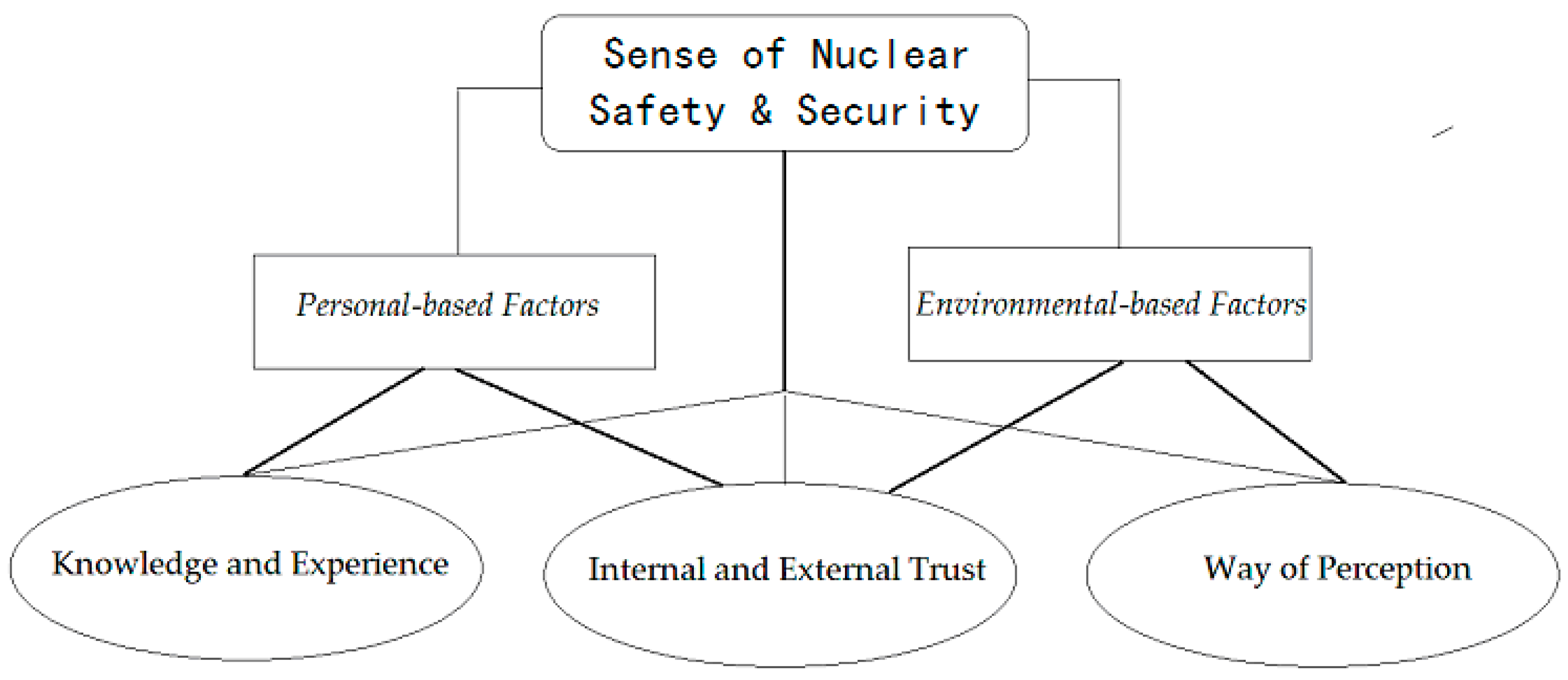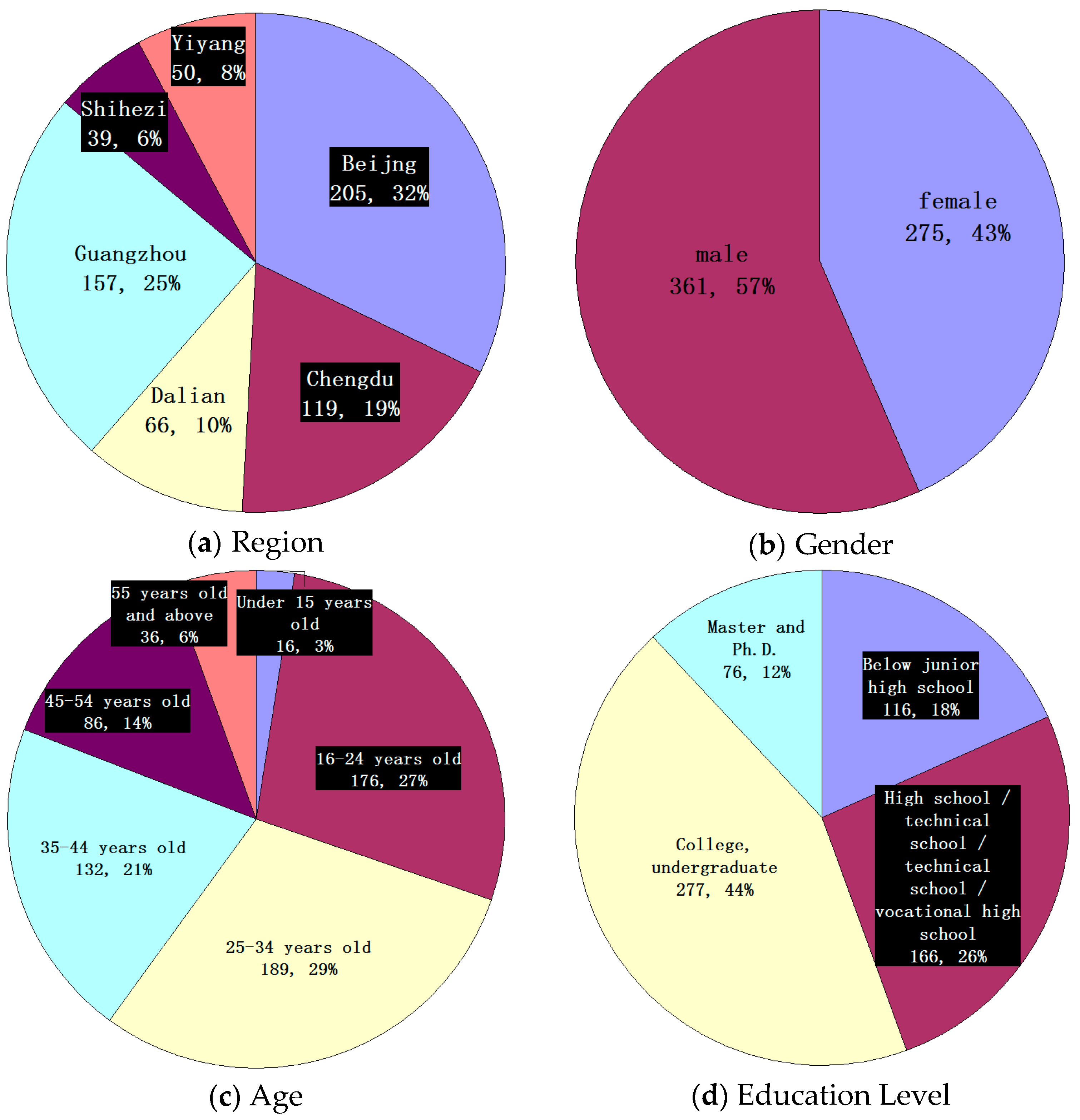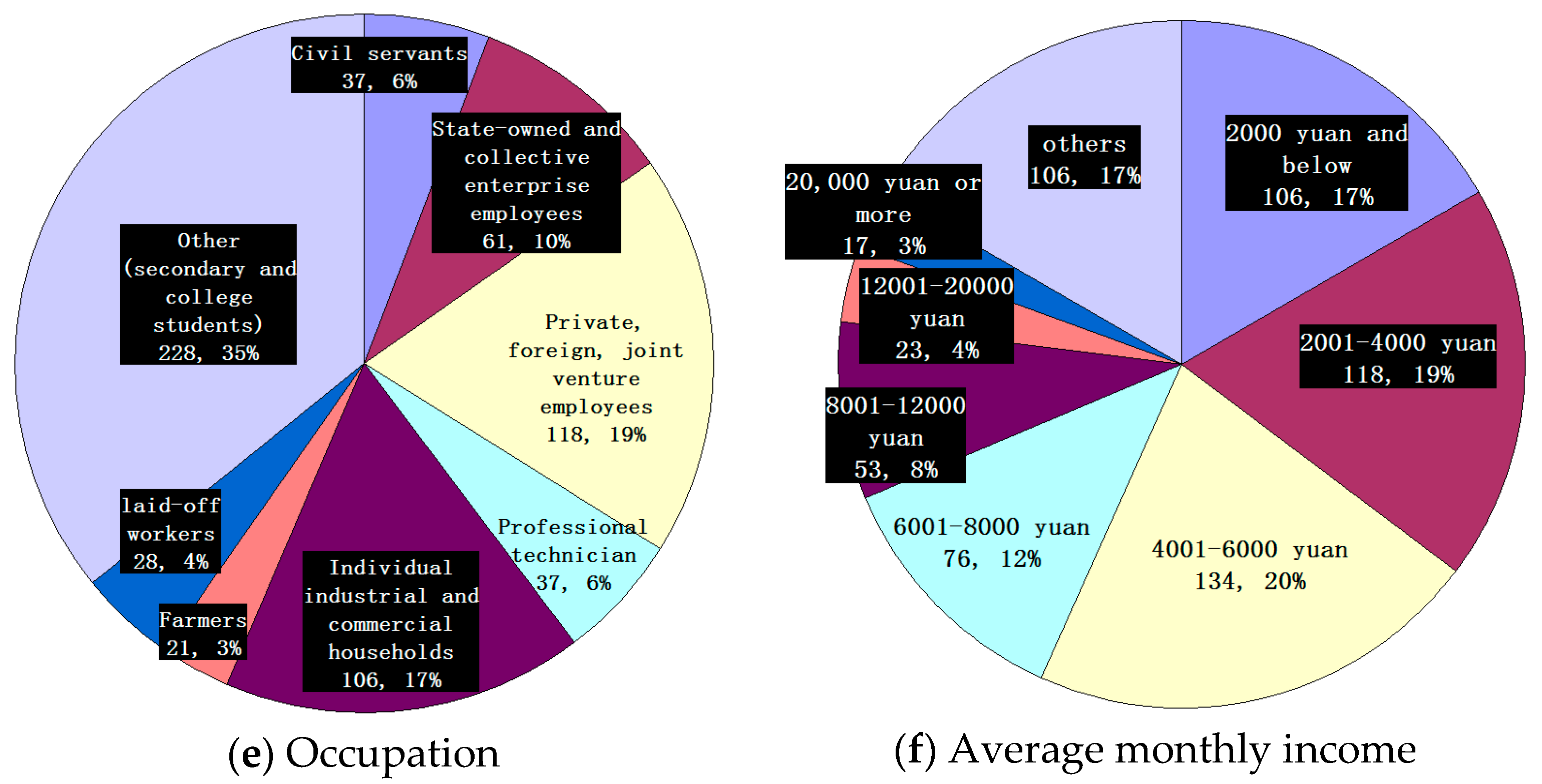2.1. Related Work
Both domestic and foreign scholars have investigated the sense of public sense of nuclear safety & security [
1,
2,
3,
4,
5,
6,
7,
8,
9,
10,
11]. Among them, scholars have studied the composition of the sense of informational users, which has two dimensions and six aspects, including the security technology, usability, and assurance, categorized into environmental factors and experience, preferences, and knowledge, categorized into personal factors. They have especially focused on comparing two aspects of the sense of security, which are emotion and trust [
12]. This model was a great inspiration for this research.
The sense of nuclear safety & security is very unsystematically studied by some foreign scholars [
12]. For example, some scholars have explored the perceptions of residents’ proximity to, and social risks caused by, a nuclear power station in a certain place in Britain. According to Wikipedia, during the period of 2005–2017, the polls of nuclear issues were conducted by the International Atomic Energy Association (the IAEA) [
13], the European Union Institute of Nuclear Energy Research [
14], the Soka Gakkai International Institute [
15], the U.S. Nuclear Energy Research Institute [
16], Pew Research Center [
17], Gallup [
18], and The Guardian [
19], from which the public attitude and tendencies to the utilization of nuclear energy and nuclear safety were sampled and observed. The results of these public opinion surveys all show that there is a very low proportion of people in favor of nuclear power generation, and most people are against it and consider it as a threat. These surveys, while somewhat similar to our study, are not specific surveys on the issue of nuclear safety & security but rather purely opinion polls on general nuclear issues. In addition, there are very few domestic academic papers concerning this issue, but news reports on promoting a public sense of nuclear safety & security implied a systematic study on this issue [
20,
21]. This study is designed to shed some light on the research of the populace’s sense of nuclear safety & security in China.
2.2. New Constructed Evaluation Model
Based on the existing research findings on the sense of security, this paper, from the perspectives of cognitive psychology and sociology of safety and security [
7], tries to categorize the factors that affect the current Chinese public’s sense of nuclear safety & security into three aspects, which are considered as three-dimensional so as to construct an evaluation model (
Figure 1):
(1) Knowledge and experience. This refers to the public’s security knowledge on the level of nuclear devices, nuclear facilities, nuclear materials, the nuclear environment and nuclear activities, and their own life experiences, if any, with nuclear related issues.
(2) Internal and external trust. This is the core content of the assessment of the sense of security. Inner trust is self-confidence, i.e., you can be confident that you are not endangered by nuclear hazards. External trust is your personal trust in nuclear matters, nuclear activities, nuclear environment, and government nuclear safety & security policies.
(3) Ways of perception. This refers to public access to nuclear safety & security knowledge for enhancing their nuclear risk perception. It also includes people’s trust in media coverage of nuclear issues.
What needs to be explained is that knowledge and experience mainly come from personal-based factors; perception is mainly derived from environmental-based factors; the internal and external trust are formed under the joint action of individual cognition and the external environment.
2.3. Questionnaire Survey
The methods of the sampling survey, the questionnaire survey and SSPS (Solutions Statistical Package for the Social Sciences) have been mainly performed in this study.
Based on the evaluation model above, we designed 11 questions focusing on the public’s basic knowledge of nuclear matters, nuclear affairs, and the nuclear environment, the subjective assessment of the recent major nuclear activities and nuclear dangers, and the channels for public access to nuclear safety & security information and its credibility. The steps taken to develop this survey are showed in the following part. The analysis of the questionnaire results is conducted in the
Section 3 and
Section 4.
In the process of developing questionnaire survey, the following steps were used:
(1) Geographical (city) sample. The principle applied is to survey these residents in points involved in nuclear facilities, nuclear materials, nuclear stations, and nuclear activities. The sampled areas and cities with this principle are the Northeast (Dalian), North China (Beijing), Central South (Yiyang), South China (Guangzhou), Southwest (Chengdu), and Northwest (Shihezi).
(2) Demographic sample. One millionth of the total population by the end of 2016 in the local city is sampled to obtain the approximate sample size of each city.
(3) The survey method. The interviewer conducts a questionnaire survey for random passersby.
(4) Statistical Analysis. It is mainly done with SPSS tools.
Finally, we received 636 samples.
Figure 2a–f show the specific distribution of valid sample objects.
As shown in
Figure 2a, the samples are highly representative in the geographical distribution. Beijing (32%), Guangzhou (25%), and Chengdu (19%), as the first-tier cities in China, have a relatively large population of permanent residents (living the local for more than 6 months in China).
As shown in
Figure 2b, the majority of respondents are male (accounting for 56.8%), basically matching the gender characteristics of China’s urban population.
As shown in
Figure 2c, the respondents are mostly aged between 16–45 (78.3%), basically in line with the demographic characteristics of the national economic and social activities.
As shown in
Figure 2d, most respondents (43.6%) have college or undergraduate degrees, followed by those with high school, vocational high school, and technical qualifications (26.1%), and the percentage of those with a Masters or Ph. D degree is the least (12%) in the sample. The education attainment of the respondents is similar to the basic characteristics of the population of the first- and second-tier cities in this survey. This high level of education attainment lays a good foundation for evaluating the public’s sense of nuclear safety & security.
The occupational distribution of
Figure 2e shows that most respondents are young students (35.9%), followed by workers in private-owned enterprises, foreign-funded enterprises and joint ventures (18.6%), and individual industrial and commercial households (16.7%).
According to the average monthly income of the respondents from the previous year, as shown in
Figure 2f, the number of people 6000 Yuan is the largest, accounting for 56.3%; and 16.7% people is not sure of their income (i.e., others). This income composition has a certain relationship with the occupation characteristics of this sample--the majority respondents are of young students. The mid- and high-income earners with their income averaging between 6001–12,000 Yuan account for about 20%. This proportion is relatively high, which is certainly due to the proportion of respondents from the first- and second-tier cities (higher income than that of third and fourth-tier cities).
In addition, to watch the overall analysis in the Part 4, 100% of the public’s sense of safety & security is divided into three levels: 0–33% for the lower level, 34–67% for the mid-range level, and 68–100% for the higher level.







